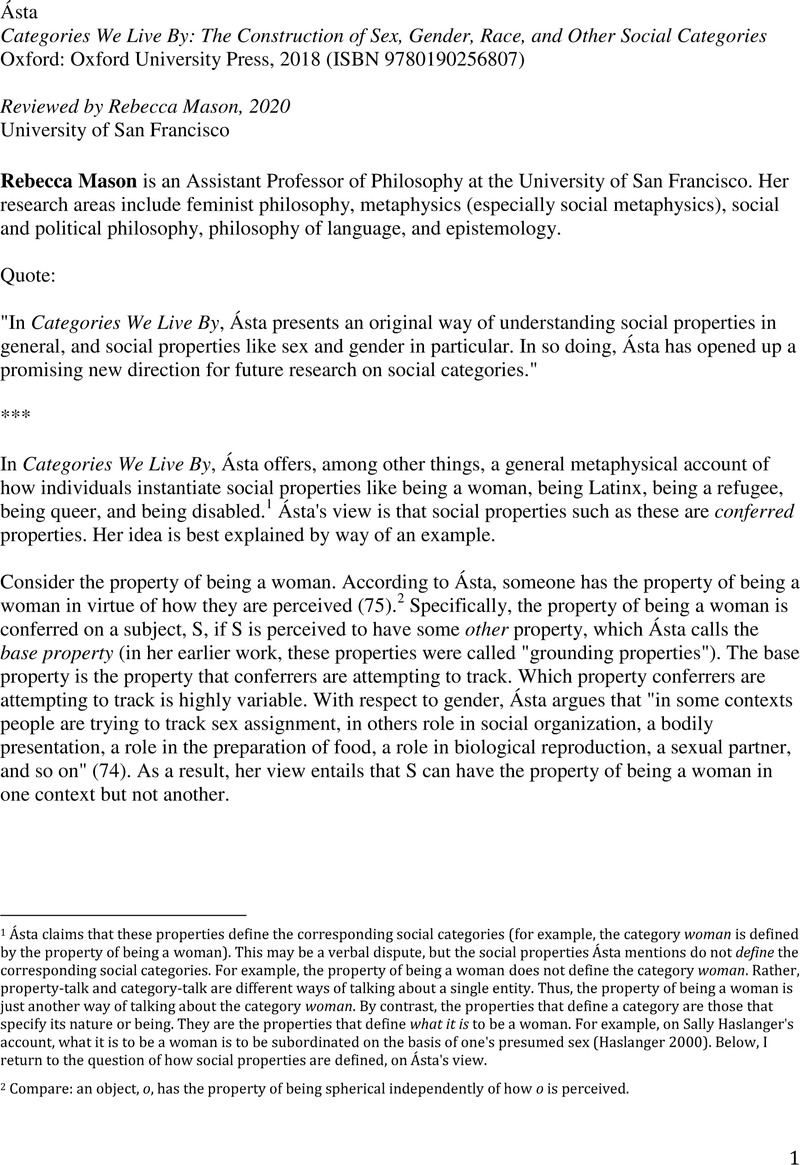No CrossRef data available.
Article contents
Ásta, Categories We Live By: The Construction of Sex, Gender, Race, and Other Social Categories. Oxford: Oxford University Press, 2018, ISBN 9780190256807
Published online by Cambridge University Press: 01 October 2021
Abstract

- Type
- Book Review
- Information
- Copyright
- Copyright © Hypatia, Inc., 2020
References
1 Ásta claims that these properties define the corresponding social categories (for example, the category woman is defined by the property of being a woman). This may be a verbal dispute, but the social properties Ásta mentions do not define the corresponding social categories. For example, the property of being a woman does not define the category woman. Rather, property-talk and category-talk are different ways of talking about a single entity. Thus, the property of being a woman is just another way of talking about the category woman. By contrast, the properties that define a category are those that specify its nature or being. They are the properties that define what it is to be a woman. For example, on Sally Haslanger’s account, what it is to be a woman is to be subordinated on the basis of one’s presumed sex (Haslanger 2000). Below, I return to the question of how social properties are defined, on Ásta’s view.
2 Compare: an object, o, has the property of being spherical independently of how o is perceived.
3 According to Ásta, “a feature is socially significant in a context in which people taken to have the feature get conferred onto them a social status” (3).
4 This is so even if, as Ásta mentions, “in some contexts having red hair serves as a base property for the conferral of a social status, being a redhead, consisting in constraints and enablements” (24).




